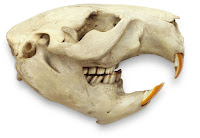 Today’s post is going to be talking about one of the world’s
best ecosystem engineers, the beaver. The term ecosystem engineer is defined as
an organism which is capable of modifying, creating or destroying habitat and directly
or indirectly modulates the availability of resources to other species, causing
physical state changes in biotic or abiotic materials.
Today’s post is going to be talking about one of the world’s
best ecosystem engineers, the beaver. The term ecosystem engineer is defined as
an organism which is capable of modifying, creating or destroying habitat and directly
or indirectly modulates the availability of resources to other species, causing
physical state changes in biotic or abiotic materials.
For beavers this engineering generally takes the form of dams
and the lodges they create to live in. however beavers also create extensive
networks of canals which they dig out to help transport the wood they fell to
areas where it is required. The largest known beaver dam is in Buffalo National
Park (Canada) and was created in 1975 measuring 850m, which is a number which keeps
growing as beavers add extensions to it.

like artificial dams and so have long reaching effects on ecosystems than just the immediate surroundings of the dam. A study in 2006 showed that dams effected groundwater flow in the Rockies, forcing it to flow towards the sides of valleys. This in turn leads to the rise in the water table which helps to sustain plants and animals during dry summer seasons.
 As for the beaver it’s self it is extremely well suited for its
engineering lifestyle. Like all rodents beavers have extended incisors which
grow continually throughout their lives. These teeth are used for the felling
of trees and bushes to help build their dams and lodges as well as providing
food. These teeth are also adapted to be self-sharpening due to their
composition. The front of a beavers tooth is made of hard enamel while the back
portion is softer dentin; this means the rear of the tooth is worn away fast
and resulting in the creation of a sharp edge. Also their webbed feet allow
them to effectively move mud around when they are either digging canals or
patching up holes in the dam.
As for the beaver it’s self it is extremely well suited for its
engineering lifestyle. Like all rodents beavers have extended incisors which
grow continually throughout their lives. These teeth are used for the felling
of trees and bushes to help build their dams and lodges as well as providing
food. These teeth are also adapted to be self-sharpening due to their
composition. The front of a beavers tooth is made of hard enamel while the back
portion is softer dentin; this means the rear of the tooth is worn away fast
and resulting in the creation of a sharp edge. Also their webbed feet allow
them to effectively move mud around when they are either digging canals or
patching up holes in the dam. Beavers live in family groups within lodges, which again are
a master piece of engineering. From the outside lodges usually look like a pile
of sticks however inside are several chambers which are used to eat and sleep
in. To increase protection the only entrances to a beaver dam are located
underwater and so provide an easy escape route if a predator attempts to break
through into the lodge. These underwater entrances also allow access to food
stores during the winter while the lake is frozen over.
Beavers live in family groups within lodges, which again are
a master piece of engineering. From the outside lodges usually look like a pile
of sticks however inside are several chambers which are used to eat and sleep
in. To increase protection the only entrances to a beaver dam are located
underwater and so provide an easy escape route if a predator attempts to break
through into the lodge. These underwater entrances also allow access to food
stores during the winter while the lake is frozen over.
There are currently two species of beavers in existence today
(the Eurasian and North American beaver) and one species which has become
extinct. Beavers have also undergone
local extinctions due to the influences of man for instance in the UK and parts
of America they were hunted for their pelts which were considered valuable.
However reintroduction programs are being considered within Scotland for the
Eurasian beaver and trial programs have been underway since 2009 which was more
than 400 years since beavers were last seen in Scotland. These trials were
closely monitored to see the effects of the reintroduction (the 2015 report can
be seen below) and a decision is yet to be made as to whether beavers should be
reintroduced into Scotland. What do you think should happen?
Thanks for reading!
Check out this link
Check out these video
No comments:
Post a Comment